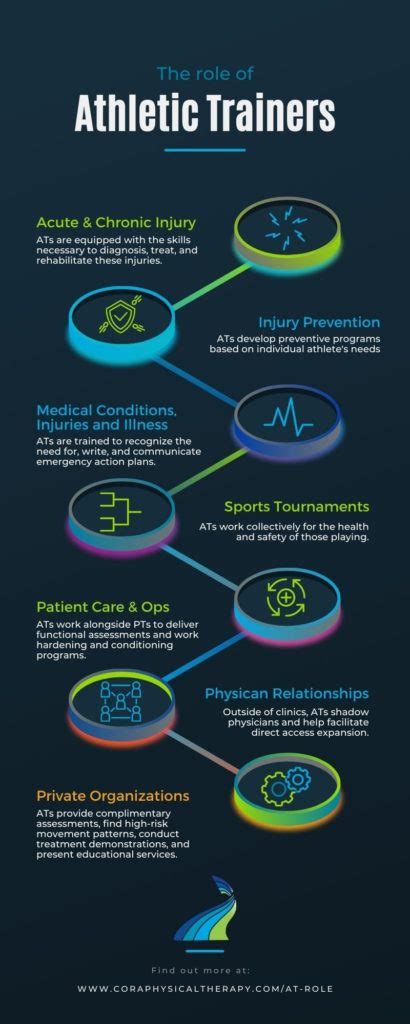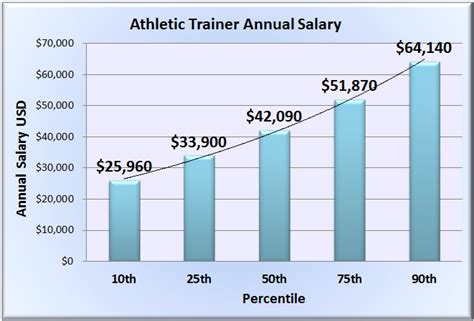For those with a passion for both athletics and healthcare, a career as a sports trainer offers a thrilling opportunity to work on the front lines of athlete performance and well-being. But beyond the passion, what is the financial reality of this profession? Understanding the earning potential is a crucial step in planning your career path.
This in-depth guide will break down the average salary for sports trainers, exploring the key factors that can significantly impact your income. While salaries can range from around $48,000 for entry-level positions to over $85,000 for senior roles in top-tier organizations, the national median provides a solid benchmark for what you can expect.
What Does a Sports Trainer Do?

First, let's clarify the role. The term "sports trainer" most professionally refers to an Athletic Trainer (AT). These are highly skilled, state-licensed healthcare professionals who collaborate with physicians to provide preventative services, emergency care, clinical diagnosis, therapeutic intervention, and rehabilitation of injuries and medical conditions.
Their responsibilities are vast and vital:
- Developing and implementing injury prevention programs.
- Providing immediate first aid and emergency care during practices and games.
- Evaluating and diagnosing acute and chronic musculoskeletal injuries.
- Creating and supervising rehabilitation programs to help athletes return to play safely.
- Educating athletes, coaches, and parents on health and wellness.
This role is distinct from a *Personal Trainer* or *Strength and Conditioning Coach*, whose primary focus is on developing fitness, strength, and athletic performance rather than managing medical care. This article will focus on the salary of the Athletic Trainer.
Average Sports Trainer Salary: The National Numbers

To understand the earning potential, we look to authoritative data from government and industry sources.
According to the most recent data from the U.S. Bureau of Labor Statistics (BLS) Occupational Outlook Handbook, the median annual wage for Athletic Trainers was $57,930 in May 2023. The median wage is the point at which half the workers in the occupation earned more than that amount and half earned less.
The BLS also provides a look at the broader spectrum of earnings:
- Lowest 10% earned: Less than $44,400
- Highest 10% earned: More than $78,170
Salary aggregators provide a similar picture. For instance, Salary.com reports the median Athletic Trainer salary in the U.S. is around $59,191, with a typical range falling between $54,166 and $65,221. Payscale notes a similar average base salary of approximately $54,000 per year.
These figures represent the national baseline. Your personal earning potential will be determined by a combination of critical factors.
Key Factors That Influence Salary

Where you fall on the salary spectrum is rarely a matter of chance. It's a direct result of your unique qualifications, choices, and professional environment.
Level of Education
The educational standard for athletic training has evolved. A Master's degree is now the entry-level requirement for certification and licensure in most states. While a bachelor's degree was once sufficient, the Commission on Accreditation of Athletic Training Education (CAATE) has mandated this shift to a master's-level education to enhance the quality of care.
Holding an advanced degree, such as a Doctor of Athletic Training (DAT), may not automatically lead to a higher salary in a clinical role, but it can be a significant advantage. A doctorate opens doors to leadership positions (e.g., Head Athletic Trainer, Program Director), university-level teaching, and research roles, all of which typically command higher salaries.
Years of Experience
Experience is one of the most reliable predictors of salary growth. As you build a track record of success in injury prevention, diagnosis, and rehabilitation, your value to an employer increases.
Here is a general breakdown based on data from sites like Payscale:
- Entry-Level (0-2 years): Expect a salary near the lower end of the national range, typically between $45,000 and $52,000. The focus here is on gaining hands-on experience under supervision.
- Mid-Career (5-9 years): With a solid foundation of experience, athletic trainers can expect to earn closer to the national median, from $55,000 to $65,000. They often take on more autonomy and responsibility.
- Experienced/Senior-Level (10+ years): Senior ATs, especially those in supervisory or head athletic trainer roles, can command salaries well above the median, often in the $65,000 to $85,000+ range.
Geographic Location
Where you work matters immensely. Salaries are often adjusted for the local cost of living and regional demand for skilled healthcare professionals. According to BLS data, the top-paying states for Athletic Trainers include:
- District of Columbia
- Hawaii
- California
- New York
- Massachusetts
Conversely, states in the Southeast and parts of the Midwest tend to have salaries below the national median. However, the lower cost of living in these areas can sometimes offset the difference in pay. Always research the specific salary landscape of the city or state you plan to work in.
Company Type / Work Setting
The environment where an athletic trainer works is perhaps the most significant factor influencing their salary.
- Professional Sports: This is the pinnacle for many in terms of prestige and pay. Athletic trainers for major league teams (NFL, NBA, MLB) can earn six-figure salaries, but these positions are extremely competitive.
- Colleges and Universities: This is the largest employment sector for ATs. Salaries vary widely based on the division (NCAA Division I vs. Division III), the size of the athletic department, and the school's budget. Head athletic trainers at major D-I programs often earn salaries well into the high five or low six figures.
- Hospitals and Physician's Offices: A growing number of ATs work in clinical settings, assisting with patient care, outreach to local schools, and serving as physician extenders. These roles often offer stable hours and competitive salaries, typically aligning with the national median.
- Secondary Schools (High Schools): While incredibly rewarding, positions at high schools often fall on the lower end of the pay scale unless the trainer is also a teacher, which can supplement their income.
- Emerging Settings: Athletic trainers are increasingly being hired by the military, law enforcement, performing arts organizations (e.g., ballet companies), and in industrial settings to help prevent workplace injuries. These niche roles can be lucrative due to the specialized skills required.
Area of Specialization
Developing expertise in a specific niche can make you a more valuable and higher-paid professional. Certifications or advanced training in areas like orthopedic rehabilitation, manual therapy, strength and conditioning (CSCS), performance enhancement, or sports data analytics can differentiate you from other candidates and justify a higher salary, especially in private practice or elite athletic environments.
Job Outlook

The future for athletic trainers is bright. The BLS projects that employment for Athletic Trainers will grow by 14% from 2022 to 2032, a rate that is much faster than the average for all occupations.
This robust growth is driven by several factors, including:
- A greater public awareness of the severity of sports-related injuries, particularly concussions.
- The expansion of athletic trainer roles into non-traditional settings like corporate wellness and public safety.
- An aging population that remains active later in life, increasing the need for expert medical care.
Conclusion

A career as an athletic trainer is a calling for those dedicated to the health and success of athletes. While the passion for the profession is a powerful motivator, it is also a financially viable and growing field.
The national median salary hovers around $57,930, but this is just a starting point. By strategically pursuing a master's degree, gaining diverse experience, targeting high-demand locations and work settings, and developing specialized skills, you can significantly increase your earning potential. For the aspiring or current professional, a clear understanding of these factors is the key to building a career that is both personally fulfilling and financially rewarding.
